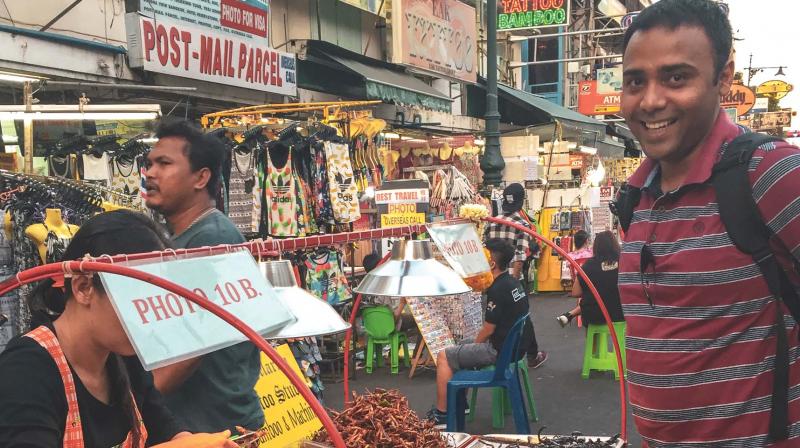Foodies’ adventurous binge
Divya and Vivek Singh have an experimental palate and have eaten varies kinds of exotic creatures, resulting in a book.

Locusts, snakes, scorpions, frogs, crocodiles, seahorses; no this is not a biology lesson. Rather, these area few among the many other creatures that the Bengaluru digital marketer turned entrepreneur, Vivek Singh have tried eating!
“It is part intellectual, part adventure and part social experience for me. Every new scary food I try how conquering another peak is for a mountaineer or visiting a ruin is for a history buff. It is also a way for me to understand places, people and their way of life,” says Vivek. “The greatest thing about food is that you can talk to people of any country, any culture, any strata of the society, and always have what is called a food-connect,” he added.
As for Divya, food was just fuel until she met the man who has since become her husband. “With Vivek, I have learnt how food can be an experience, and what it can mean to people. I now pay more attention to what I’m eating - it’s history, the flavours, benefits and textures”, she says.
“For instance, we were at a Chinese restaurant in Singapore which served deer penis soup once. The soup is supposedly effective in treating athletic injuries and also improves male virility.
They also had braised crocodile tail, which is supposedly good for asthma and collagen production. The waiter told me it would make me look ‘young forever’ if I tried it,” recounts Divya.
Despite being a fearless eater, Vivek has had his moments of doubts.”Fugu or puffer fish is the most dangerous food I’ve eaten. It’s poisonous and one could die from eating poorly cooked puffer fish. Despite the fact that we were eating at a well-known restaurant, there was enough fear to make me think 100 times about it”, he confesses.
“Similarly, the balut is the most visually jarring thing I have ever eaten. It’s a half-developed duck egg— it was a shock to my Indian sensibilities. But that is what my adventure is all about, breaking those barriers in the mind. Another shocking experience was when I first saw stuff (including snakes) getting cooked alive. I once almost didn’t want to eat seahorses because they were too cute,” he added.
Furthermore, in the face of an unappealing food, he tries to take himself into a hypothetical world where he is a native who eats that food regularly and doesn’t find it unappetising. “The only time I have needed recuperating time-outs are a when even my Indian palate couldn’t take the level of spice I was eating,” he chimes.
Divya documented her husband’s bizarre obsession in a book called Dare eat that. It is a guide to bizarre foods from around the world and includes maps, photographs and species charts to help guide the intrepid traveller on their quest for a new dish to sample. It also includes the price, and rates each dish on taste and fear factor.
Now ,she did not wake up one day and decide that she was going to write a book! “It happened quite organically — Vivek had a chart with which he catalogued the species he’d eaten. It was organised very scientifically into pisces, echinoderms, molluscs and so on. It became something that our friends kept asking about every time we met them, and that’s when I realised it interested people”, she quips.
Though the book is an account of their journeys in a guidebook format, it posed some challenges. “Food is an experience — it’s about how it looks, smells and taste. Translating the sights, sounds, smells and tastes of the places and the food into a series of descriptions that also captured the essence of each individual item was a true challeng”, Divya admits.
Next on the menu for the couple are field rats, earthworms and Indian preparations of insects like ant chutneyamong many others. “I imagine that one day we will have cricket parantha, grasshopper samosa etc. happening in India. Maybe I will invent some of these recipe,” Vivek jests.
—Angel Maria

